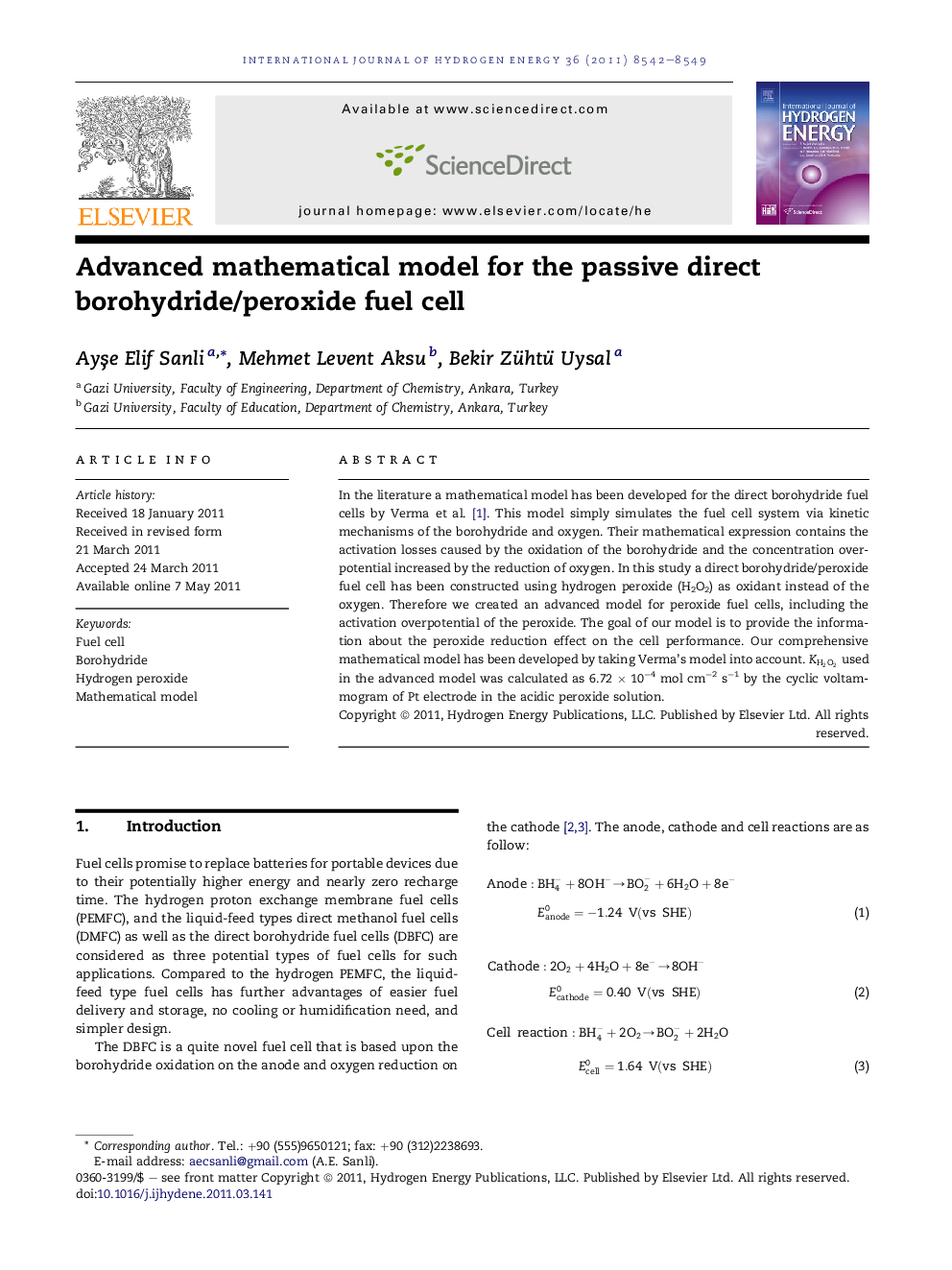| Article ID | Journal | Published Year | Pages | File Type |
|---|---|---|---|---|
| 1279171 | International Journal of Hydrogen Energy | 2011 | 8 Pages |
In the literature a mathematical model has been developed for the direct borohydride fuel cells by Verma et al. [1]. This model simply simulates the fuel cell system via kinetic mechanisms of the borohydride and oxygen. Their mathematical expression contains the activation losses caused by the oxidation of the borohydride and the concentration overpotential increased by the reduction of oxygen. In this study a direct borohydride/peroxide fuel cell has been constructed using hydrogen peroxide (H2O2) as oxidant instead of the oxygen. Therefore we created an advanced model for peroxide fuel cells, including the activation overpotential of the peroxide. The goal of our model is to provide the information about the peroxide reduction effect on the cell performance. Our comprehensive mathematical model has been developed by taking Verma’s model into account. KH2O2KH2O2 used in the advanced model was calculated as 6.72 × 10−4 mol cm−2 s−1 by the cyclic voltammogram of Pt electrode in the acidic peroxide solution.
► An advanced mathematical model for the direct borohydride/peroxide fuel cell was developed. ► The activation overvoltage caused by the peroxide was obtained. ► The mathematical model developed with DBPFC was compared with the mathematical expressions of the PEMFC and the direct borohydride fuel cell.
